
H.R.H. Grand Duchess Charlotte
Born on 23 January 1896
at Berg Castle, Luxembourg
Biography
With more than 45 years on the throne, her reign was the longest - and perhaps the most significant - in the history of our national dynasty.
An iconic figure of the monarchy, Grand Duchess Charlotte remains inextricably linked to Luxembourg's independence - from the 1919 referendum to the liberation in 1944 and the prosperous post-war years. With more than 45 years on the throne, her reign was the longest - and perhaps the most significant - in the history of our national dynasty.
Married to
Son/daughter of
Children
H.R.H. Grand Duke Jean
H.R.H. Princess Alix of Luxembourg
H.R.H. Prince Charles of Luxembourg
H.R.H. Princess Marie-Gabrielle of Luxembourg
H.R.H. Princess Marie-Adélaïde of Luxembourg
H.R.H. Princess Elisabeth of Luxembourg
Brothers/Sisters
H.R.H. Grand Duchess Marie-Adélaïde
H.R.H. Princess Hilda of Luxembourg
H.R.H. Princess Antonia of Luxembourg
H.R.H. Princess Elisabeth of Luxembourg
H.R.H. Princess Sophie of Luxembourg
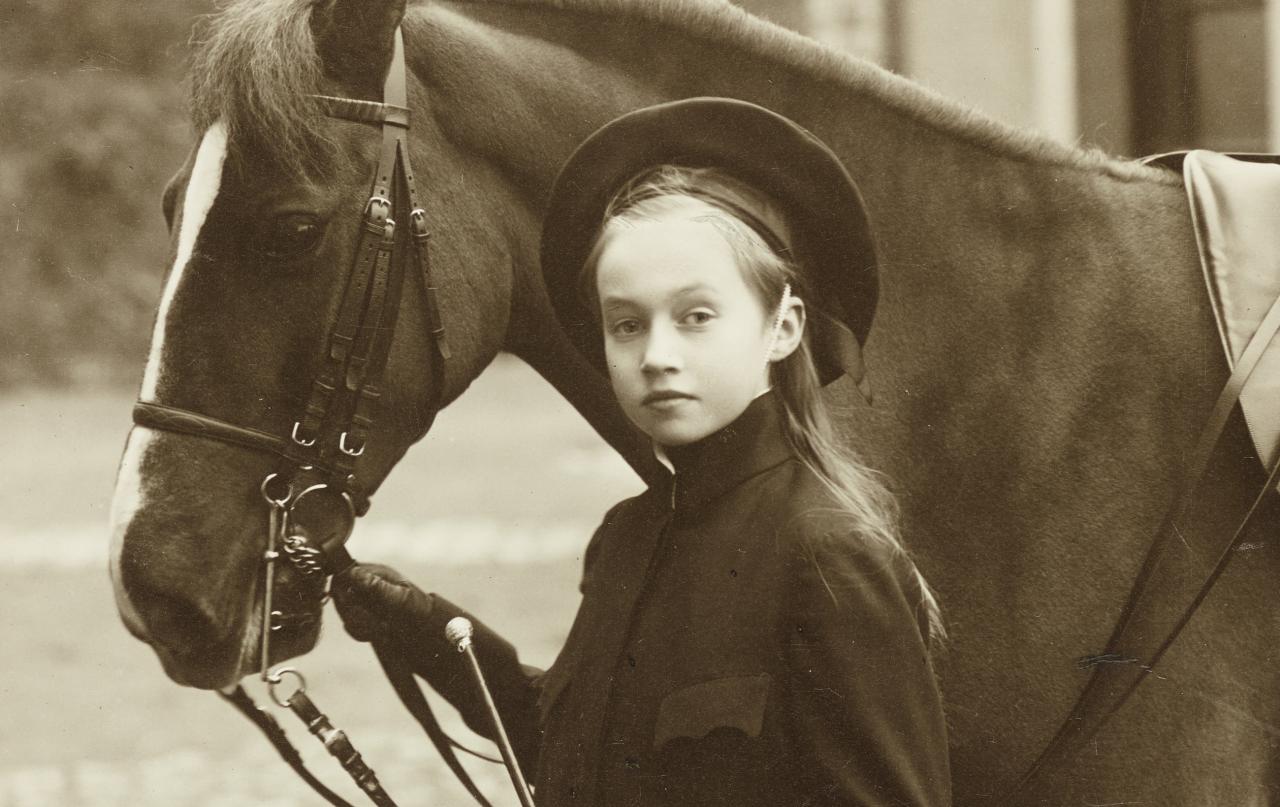
Portrait of H.R.H. Grand Duchess Charlotte
© Photographic collections / Maison grand-ducale de Luxembourg
Youth and character
Born on 23 January 1896, Charlotte was the second daughter of Hereditary Grand Duke William and Hereditary Grand Duchess Maria Anna. Although marked by her father's illness, her childhood is described as a happy one. Charlotte stood out in particular for her openness towards others and her simplicity, character traits that contrasted with those of her older sister, Marie-Adélaïde, who was more reserved.

Source : Collection photographique de la Maison grand-ducale
From an early age, Princess Charlotte made public appearances, for example at the flower festival organised by the ‘Luxembourg Attractions’ committee, and at the inauguration of the monument erected in memory of Adolphe in Wiesbaden. After Marie-Adélaïde's accession to the throne in 1912, the Grand Ducal family was quickly confronted with intense political tensions, as well as the upheavals caused by the German invasion of August 1914. The war exposed Charlotte to the realities of political intrigue, as evidenced by the leak of a telegram concerning Prince Felix of Bourbon-Parma - her future husband - which was exploited by the parliamentary opposition for the purpose of discrediting him.
The accession to the throne
The 1919 referendum confirmed the people's attachment to the monarchy and consolidated the legitimacy of Charlotte's reign.

Source : Collection photographique de la Maison grand-ducale
After her sister's abdication, Charlotte, aged only 23, became Grand Duchess of Luxembourg on 14 January 1919. With the arrival of a new Head of State, the Reuter government hoped to ease tensions, both domestically and internationally, as the Entente powers had expressed their mistrust of Marie-Adélaïde's supposed pro-German sympathies.

Source : Collection photographique de la Maison grand-ducale
Determined to reconcile the people of Luxembourg, Charlotte inherited a delicate political situation: her reign began against a backdrop of major challenges, marked by Belgium's annexationist ambitions and a republican uprising among certain sections of the population. Despite these obstacles, the 1919 referendum confirmed the people's attachment to the monarchy and consolidated the legitimacy of Charlotte's reign.
Marriage and growing popularity
Charlotte's marriage to Prince Felix of Bourbon-Parma was a major personal and political event. Delayed due to French and Belgian objections to the prince's ties to Austria and Germany, the union was finally celebrated in Luxembourg Cathedral on 6 November 1919.

Source : Collection photographique de la Maison grand-ducale
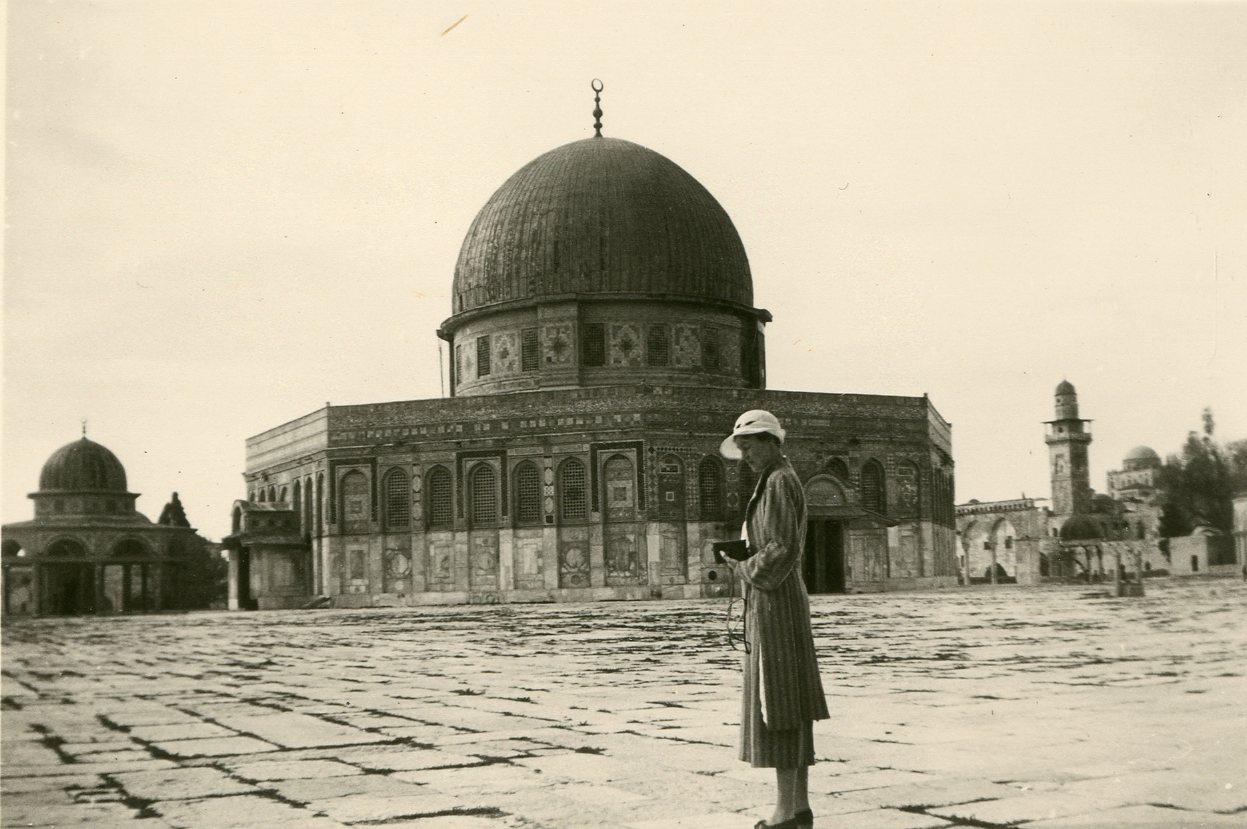
Prince Félix and Grand Duchess Charlotte in front of the Dome of the Rock in Jerusalem during their honeymoon
© Private collection
This marriage was crucial to ensuring dynastic continuity and marked the international recognition of Charlotte's reign. Despite the unequivocal result of the referendum, international recognition of the Grand Duchess as Head of State remained uncertain. However, on the occasion of her marriage, the British royal family unexpectedly announced that it would send an official representative to the festivities, thereby initiating the process of recognition of the Luxembourg monarchy.

Source : Collection photographique de la Maison grand-ducale

Source : Collection photographique de la Maison grand-ducale
The Grand Duchess and her husband settled at Berg Castle, where their first child, Prince Jean, was born on 5 January 1921. With her husband and on the wise advice of her Prime Minister Emile Reuter, the Grand Duchess worked actively to modernise the monarchy and anchor it more deeply in Luxembourgish identity: Charlotte dismissed the German dignitaries from her court and replaced them with Luxembourgers. Her cautious approach and personal efforts also helped to reconcile opposing political factions, even in towns with republican leanings, such as Esch-sur-Alzette.

Source : Collection photographique de la Maison grand-ducale

Source : Collection photographique de la Maison grand-ducale

Source : Collection photographique de la Maison grand-ducale
Charlotte's ability to keep her distance from politics and promote national unity, while exercising her power within strict constitutional limits, contributed to her growing popularity. In the spring of 1939, the celebrations marking the centenary of independence provided an opportunity for the people of Luxembourg to show their attachment to the dynasty and, in particular, to Grand Duchess Charlotte.

TT.RR.HH. Grand Duchess Charlotte and Prince Félix at one of the official events celebrating the centenary of the independence of the Grand Duchy of Luxembourg
© Photographic collections / Cour grand-ducale
In addition, official visits to the World's Fairs in Brussels in 1935 and Paris in 1937 underscored Luxembourg's affirmation on the international stage. Princes Jean and Felix also forged links with the American authorities during their visit to the World's Fair in New York in 1939, while on the country's eastern border, incidents were multiplying and Nazi aggression was imminent.
The Second World War and exile
Aware of the risks of a new conflict, in 1938 the government adopted emergency laws granting full powers to the Grand Duchess and her government in the event of a crisis. Prince Felix even drew up a contingency plan for the Grand Ducal family, providing for temporary refuge in Lasauvage.
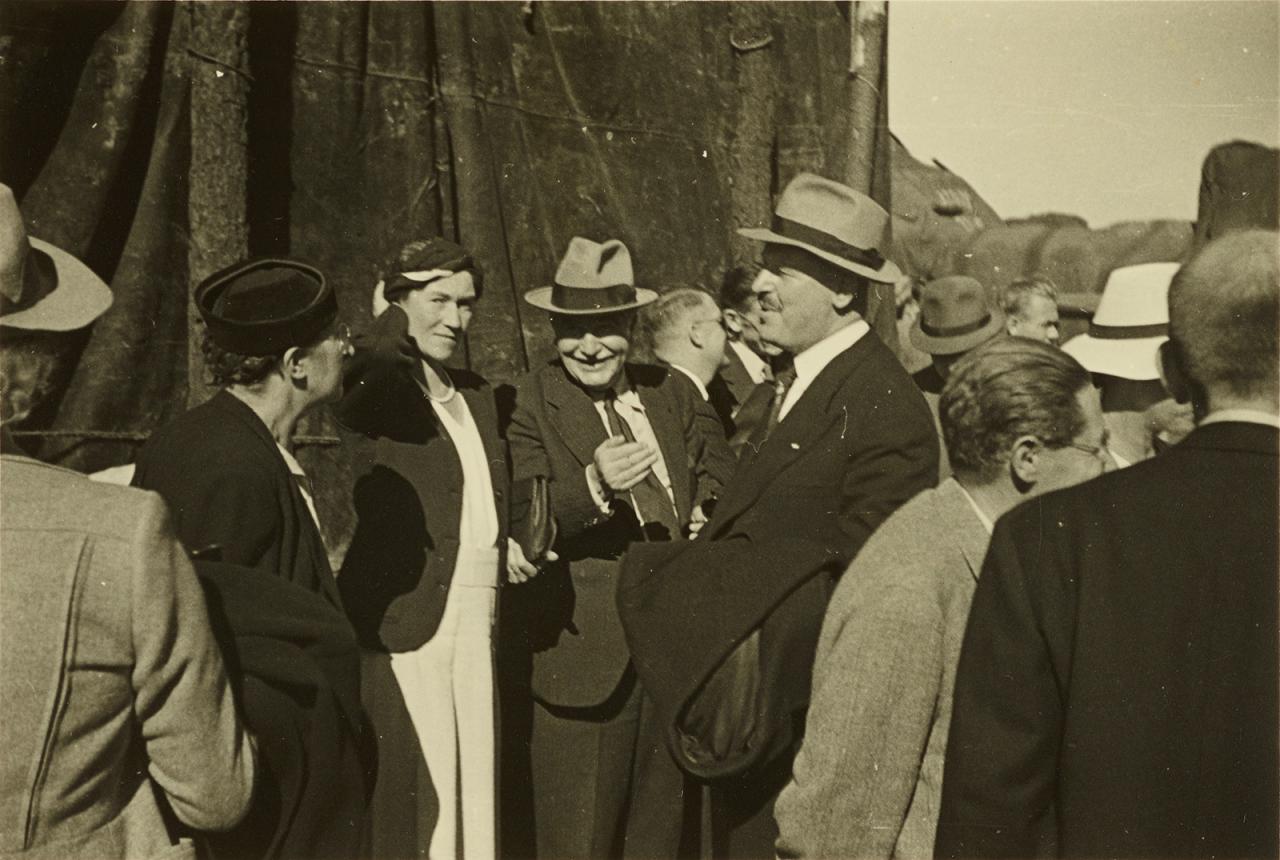
On the quays of a Portuguese port, H.R.H. Grand Duchess Charlotte is in full discussion with Ministers of the Luxembourg Government in exile
© Photographic collections / Cour grand-ducale
By attacking Poland on 1 September 1939, Nazi Germany triggered the Second World War. Eight months later, on the night of 9 to 10 May 1940, its troops invaded Luxembourg. Faced with the speed of the offensive, the Grand Duchess, her family and the government went into exile, settling first at the Château de La Celle-Saint-Cloud, near Paris, and then at the Château de Lamonzie-Montastruc, in the Dordogne.
From France, they continued their journey through Spain to Portugal, where Consul Manuel Ribeiro do Espirito Santo Silva offered them his support. Meanwhile, the Luxembourg Chamber of Deputies, under the presidency of Émile Reuter, reaffirmed its loyalty to Grand Duchess Charlotte, the guarantor of national independence. It is reported that, in response to requests from those who wanted her to return to Luxembourg, she replied:
My heart says yes, but my reason says no.
H.R.H. Grand Duchess Charlotte

Source : Collection photographique de la Maison grand-ducale
The exile took a decisive turn thanks to the intervention of United States President Franklin Delano Roosevelt, who was sympathetic to the Luxembourg cause. He made the cruiser USS Trenton available to the Grand Ducal family, allowing the Grand Ducal children and their father, Prince Felix, to take refuge in the United States, landing in Annapolis on 25 July 1940. Accompanied by her Minister of Foreign Affairs, Joseph Bech, Charlotte first travelled to London, where she addressed the people of Luxembourg for the first time on BBC radio.
After arriving in the United States in October 1940, the Grand Duchess joined her family and subsequently settled in Canada, which better suited American neutrality while allowing her to maintain close ties with the Luxembourgish diaspora, particularly in the Midwestern states. In Montreal, she became an active symbol of moral resistance. Invited to the White House in 1942, she received the personal support of the President, who praised Luxembourg's role in post-war Europe. Grand Duchess Charlotte then undertook several goodwill tours in the United States and Canada to raise awareness of the cause of the Luxembourgish people, giving numerous public speeches, participating in radio interviews and engaging in diplomatic contacts.
Her sincerity and simplicity impressed the North American press, and her commitment helped to keep Luxembourg in the consciousness of the Allies. A 5-cent American stamp, issued in 1943, featured the Luxembourg flag in her honour.

Reception in honour of the birthday of H.R.H. Grand Duchess Charlotte and Luxembourg's National Day during the British exile in January 1942
© Photographic collections / Cour grand-ducale

The Grand Duchess and Prince Félix review a squad of Luxembourg volunteers outside the Luxembourg embassy in London in 1944
© Photographic collections / Cour grand-ducale
The Luxembourg capital was liberated on 10 September 1944. The return of Prince Felix and Prince Jean, who had joined the British army, was greeted by a jubilant population. Grand Duchess Charlotte, still abroad, was eagerly awaited. She finally returned to Luxembourg on 14 April 1945, aboard a plane provided by General Eisenhower. Greeted by a huge crowd, her return marked the restoration of national sovereignty.
The trials of war led Luxembourg to abandon its policy of neutrality and establish a new army. As for the monarchy, it emerged stronger from the conflict, embodied by the figure of Charlotte, now recognised as the voice of the nation and the figurehead of the resistance to the Nazi occupiers from abroad.

14 April 1945 - Findel aerodrome, return from exile
Source : Collection photographique de la Maison grand-ducale
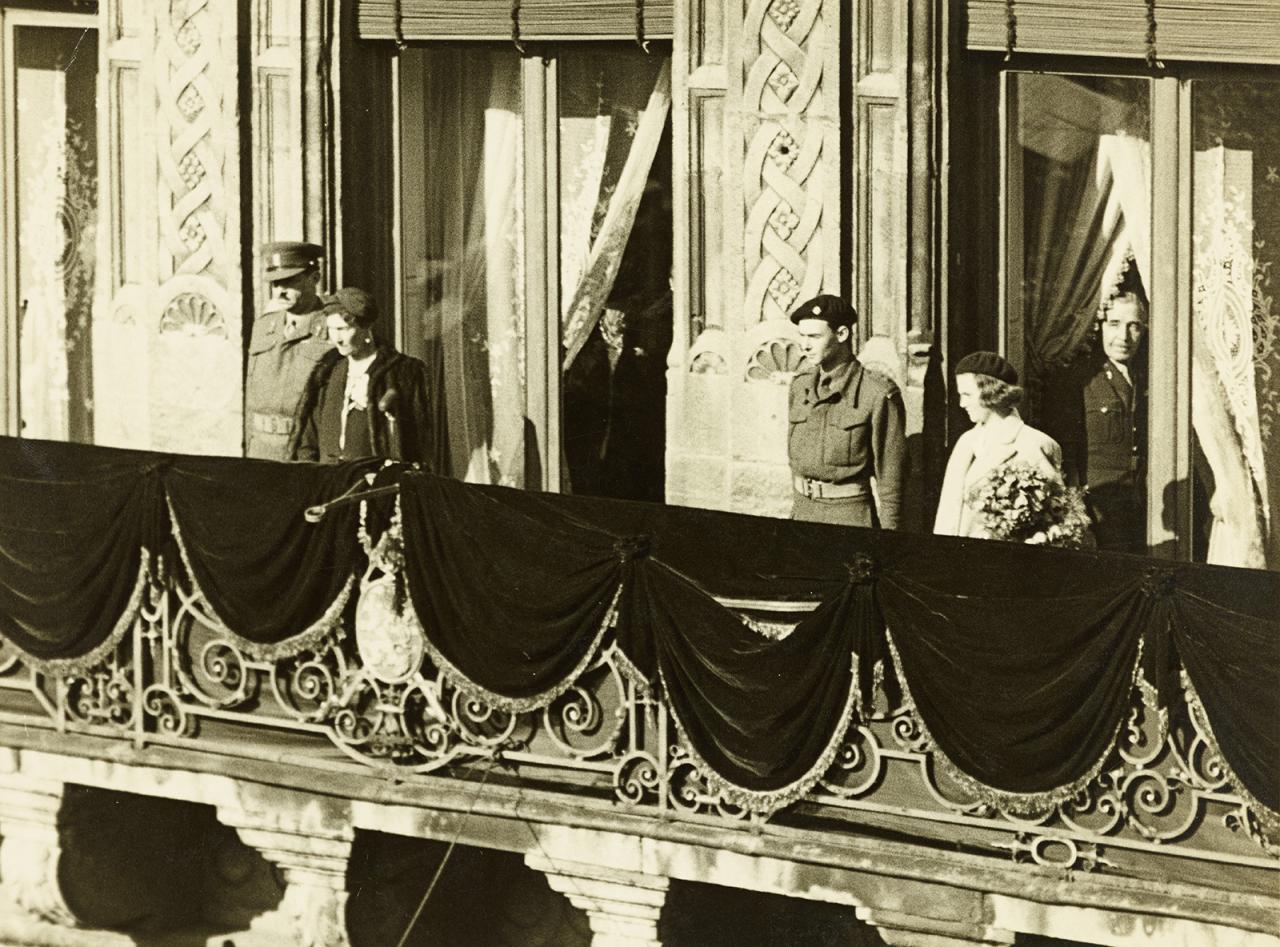
Members of the Grand Ducal Family on the balcony of the Grand Ducal Palace during the triumphant return of H.R.H. the Grand Duchess
© Photographic collections / Cour grand-ducale

Source : Collection photographique de la Maison grand-ducale

Source : Collection photographique de la Maison grand-ducale

Grand Duchess Charlotte and Winston Churchill on the balcony of the Grand Ducal Palace
© Photographic collections / Maison grand-ducale de Luxembourg
Luxembourg's repositioning
After the war, the Œuvre nationale de secours Grande-Duchesse Charlotte (‘Grand Duchess Charlotte National Relief Organisation’) was established to help victims of the occupation. Charlotte undertook numerous visits across the country, bringing comfort and hope to devastated villages, particularly those ravaged by the Battle of the Bulge.

Grand Duchess Charlotte on the balcony of the Grand Ducal Palace
© Photographic collections / Maison grand-ducale de Luxembourg
In her speech on 16 April 1945, delivered to the Chamber of Deputies, she paid tribute to the courage of the Luxembourgish people, declaring:
Despite the devastation and moral toll of years of oppression, we will build a humane society that is fairer and more liveable, especially for the working classes who defended their homeland with such love, courage and self-sacrifice... I reiterate my faith in the patriotic unity of the Luxembourg people. Hand in hand, we will march towards the future.
H.R.H. Grand Duchess Charlotte
In 1956, the Grand Duchess received the Golden Rose from Pope Pius XII in recognition of her deep spirituality and courageous conduct during the Second World War. In addition, in the 1950s and 1960s, official visits abroad became more frequent, affirming Luxembourg's place on the international stage: State visits were no longer limited to neighbouring countries, but extended across the Atlantic. It was also during Charlotte's reign that Luxembourg became involved in the early stages of European reconstruction, notably with the establishment of the Court of Justice in the capital of the Grand Duchy.

© Photothèque de la Ville de Luxembourg / Tony Krier
Final commitments and abdication
In 1959, on the occasion of her 40th jubilee, newspapers highlighted the deep bond between the Grand Duchess and her people. Politicians, in their public speeches, even went so far as to present her as the embodiment of the nation.
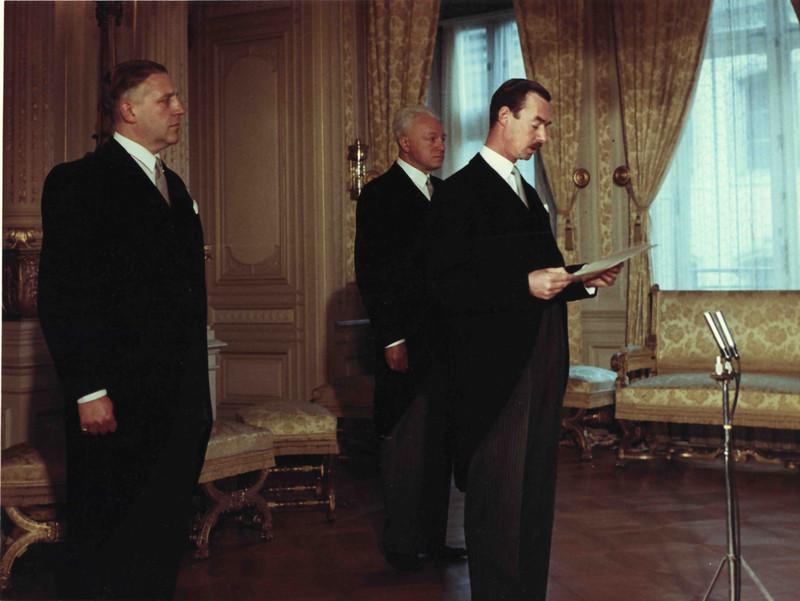
H.R.H. Crown Prince Jean of Luxembourg during the official swearing-in ceremony as Lieutenant-Représentant of his mother, H.R.H. Grand Duchess Charlotte.
© Collection Cour grand-ducale
In 1961, the Order of Merit of the Grand Duchy of Luxembourg was created in response to the sense of national renewal that had prevailed since the end of the Second World War. On 28 April of the same year, Charlotte appointed her son, Hereditary Grand Duke Jean, as Lieutenant-Représentant, thus initiating the gradual transfer of the crown.
In 1963, Grand Duchess Charlotte fulfilled her last major official engagements, including a visit to the United States in May, where she was received by President John F. Kennedy. She was also welcomed in October by French President Charles de Gaulle, to whom she expressed her deep gratitude:
Today, our presence here fills our hearts with emotion - the emotion that accompanies the significance of a grand gesture - because this is the first time since the Grand Duchy became independent that a Luxembourg Head of State has had the honour of being officially received in France. Our feelings are mixed with pride and gratitude. France, which we salute as one of the great nations of the world, acknowledges through this gesture Luxembourg’s place and political role in the destiny of Europe.
H.R.H. Grand Duchess Charlotte

1960 - State Visit to the Kingdom of Belgium
© Photothèque de la Ville de Luxembourg / Pol Aschman

1963 - State Visit to the French Republic
© Photothèque de la Ville de Luxembourg / Pol Aschman

1963 - State Visit to the United States of America
© AFP
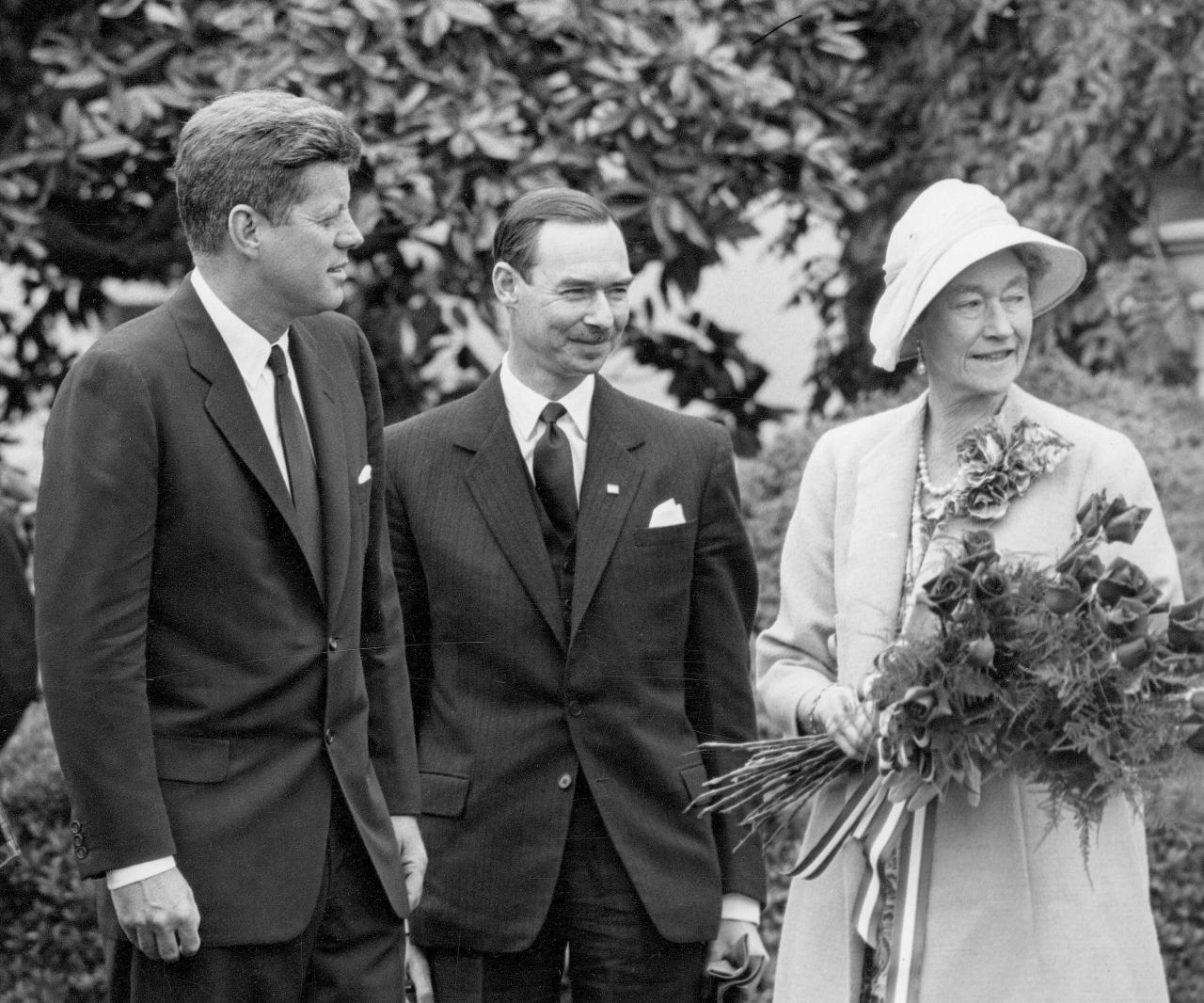
TT.RR.HH. the Grand Duchess and the Crown Prince are welcomed by the American President, Mr. John F. Kennedy, during Luxembourg's State visit to the USA in 1963
© Photographic collections / Cour grand-ducale
After 45 years of reign, on 21 March 1964, Grand Duchess Charlotte announced her intention to abdicate; on 11 November 1964, she addressed the nation, expressing her confidence in the country's future under her son's leadership. The following day, 12 November, the formal abdication took place at the Grand Ducal Palace, and Grand Duke Jean was sworn in before the Chamber of Deputies.

© Photothèque de la Ville de Luxembourg / Tony Krier

© Photothèque de la Ville de Luxembourg / Tony Krier
Retired to Fischbach Castle, the Grand Duchess devoted her time to her family and her passion for cultivating roses. She continued to follow developments in the country with interest and occasionally attended major events. In 1969, surrounded by her six children, their spouses, and her twenty-seven grandchildren, she celebrated her 50th wedding anniversary with Prince Felix, who passed away the following year.

Funeral of Prince Felix of Bourbon-Parma
© Jean Weyrich
Despite her withdrawal from public life, the people of Luxembourg remained deeply attached to her and her 80th birthday was celebrated with great pomp and ceremony in 1976. Her last public appearance took place in May 1985, during a meeting with Pope John Paul II. She passed away a few weeks later, on 9 July 1985, at the age of 89. Her funeral, a truly national event, was attended by many members of royal families and European dignitaries. She was buried in the Grand Ducal crypt of Notre-Dame Cathedral in Luxembourg.
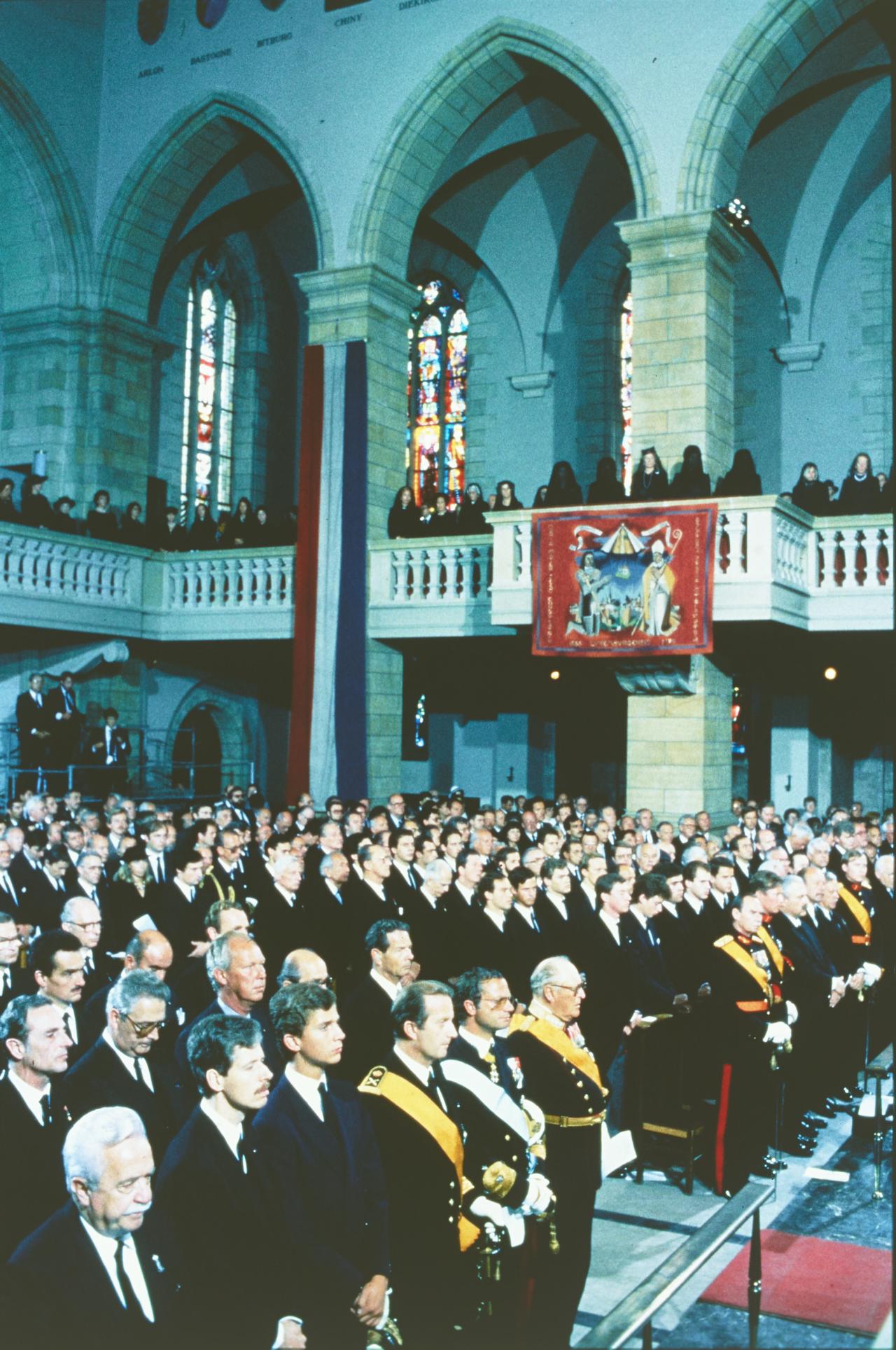
Funeral of H.R.H. Grand Duchess Charlotte on 13 July 1985
© Photographic collections / Cour grand-ducale
Her reign is remembered for uniting the people of Luxembourg and ensuring the country's independence and stability.








